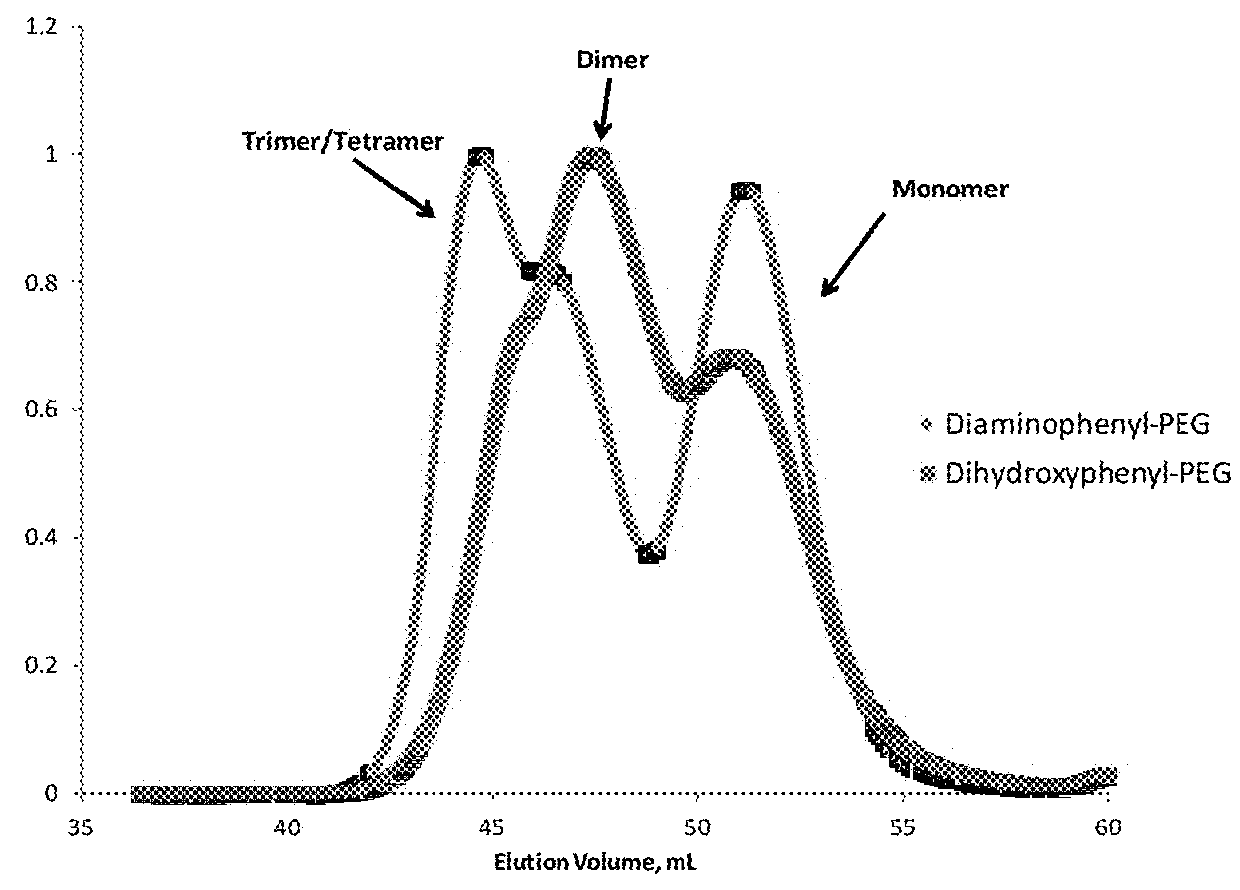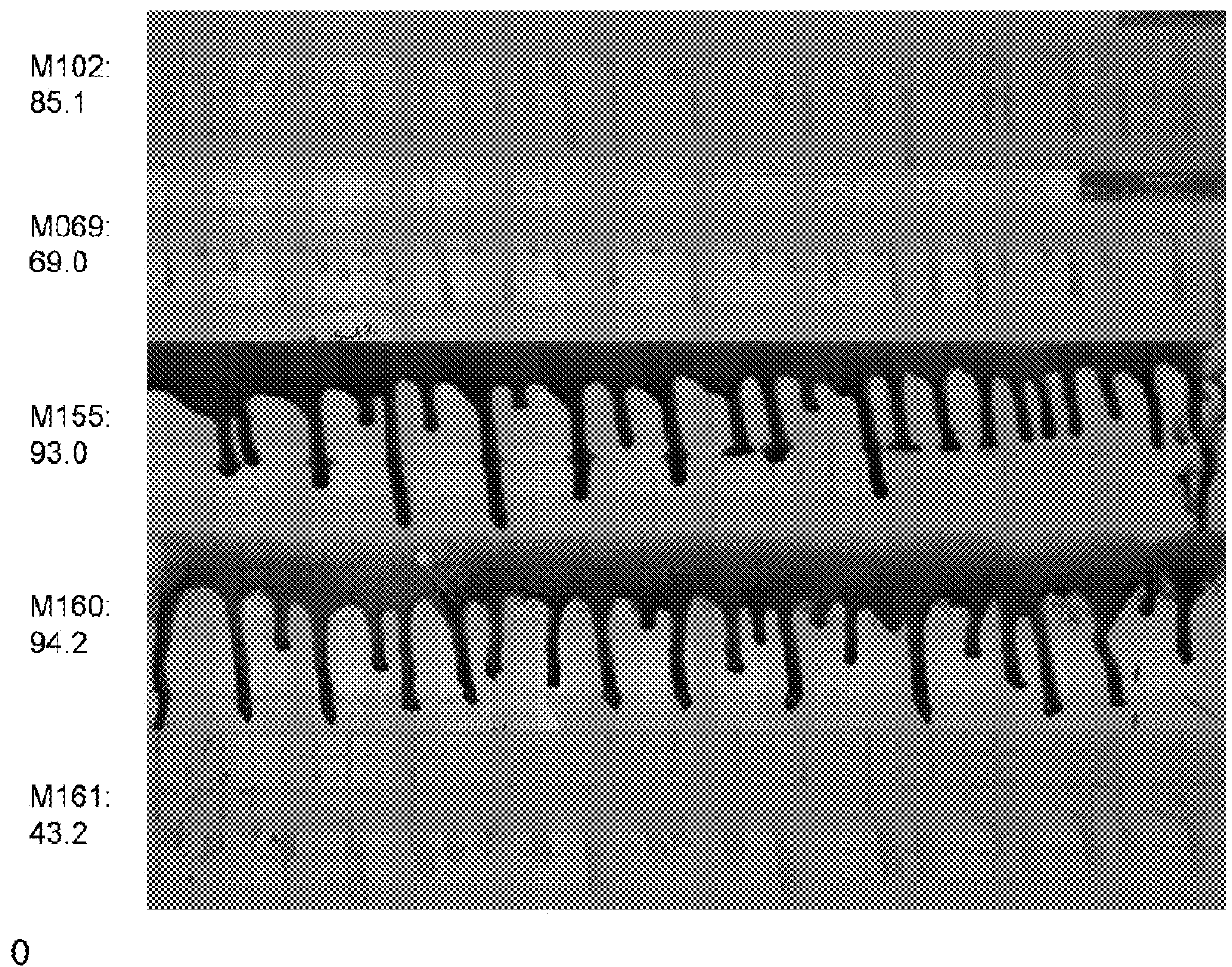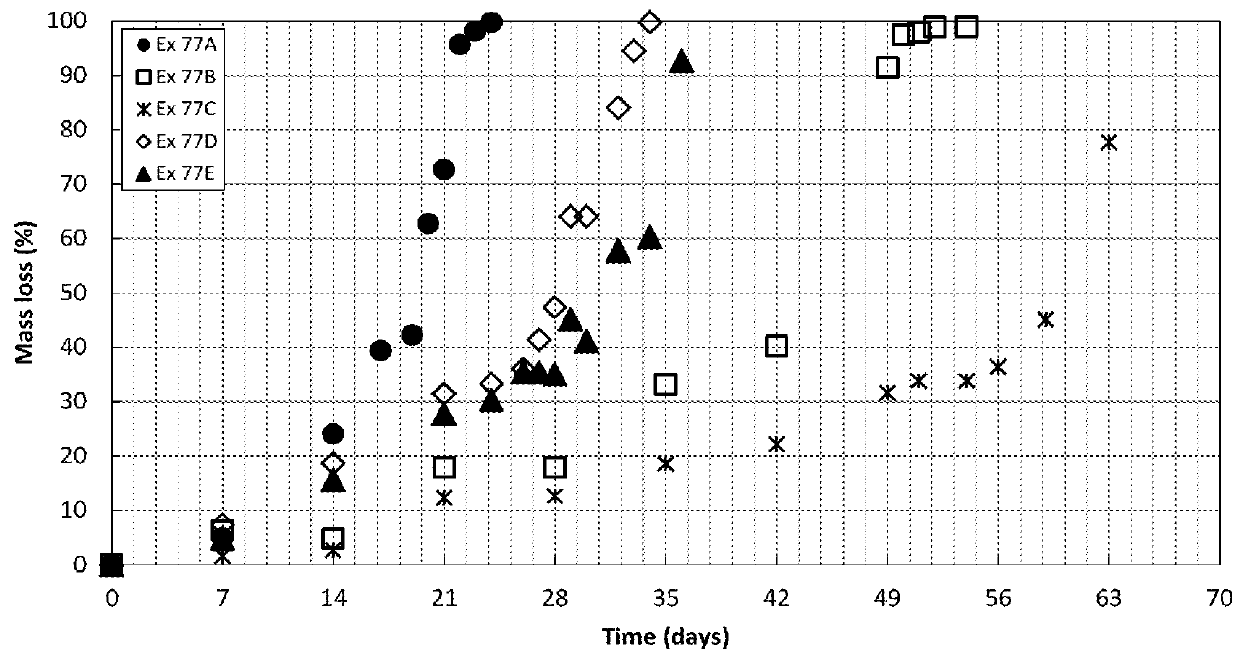Peg-based adhesive phenylic derivatives and methods of synthesis and use
a technology of phenylic derivatives and adhesives, applied in the field of medical adhesives, can solve the problems of poor tissue adhesion characteristics, poor mechanical properties, and limited application prospects of adhesives, and achieve the effect of inhibiting or reducing the growth of biofilms (bacteria)
- Summary
- Abstract
- Description
- Claims
- Application Information
AI Technical Summary
Benefits of technology
Problems solved by technology
Method used
Image
Examples
experimental examples
Example 1
Synthesis of Acetyl Vanillic Acid
[0204]20.04 g (112 mmol) of vanillic acid was dissolved in 50 mL (618 mmol) of pyridine and 50 mL (529 mmol) of acetic anhydride and allowed to stir for 2 hour. The solution was poured into 1200 mL of nanopure water and the pH was adjusted to 2 using concentrated HCl. The solution was extracted twice with a total of 700 mL of ethyl acetate and dried with anhydrous magnesium sulfate. The magnesium sulfate was suction filtered off and the organic solvent was evaporated off. The compound was dried for ˜23 hours under vacuum. The compound was recrystallized in 400 mL of a 1:1 mixture of water:methanol. The precipitate was suction filtered and placed under vacuum. 21.58 g of material was obtained. 1H NMR (400 MHz, DMSO / TMS): δ 13.08 (s, 1H, —COOH—), 7.59 (d, 1H, —C6H3—), 7.55 (s, 1H, —C6H3—), 7.20 (d, 1H, —C6H3—), 6.55 (d, 1H, —CH═CH—COOH), 3.81 (s, 3H, —CH3—O—C6H3—), 2.27 (s, 3H, CH3—COO—C6H3—).
example 2
Synthesis of Acetyl Ferulic Acid
[0205]20.0 g (103 mmol) of ferulic acid was dissolved in 50 mL (618 mmol) of pyridine and 50 mL (529 mmol) of acetic anhydride and allowed to stir for 90 minutes. The solution was poured into 1200 mL of nanopure water and the pH was adjusted to 2 using concentrated HCl. The solution was extracted twice with a total of 800 mL of ethyl acetate. The insoluble material from the aqueous layer was suction filtered. The insoluble material was dried for ˜20 hours and sonicated in 400 mL nanopure water for 45 minutes. The material was suction filtered, washed with 100 mL nanopure water and dried under vacuum for ˜23 hours. 14.1 g of material was heated and stirred in 500 mL of methanol and placed at ˜15° C. for ˜22 hours. The methanol was decanted off and 200 mL of methanol was added and stirred for ˜15 minutes. The precipitate was suction filtered and placed under vacuum until dry. 11.49 g of material was obtained. 1H NMR (400 MHz, DMSO / TMS): δ 12.37 (s, 1H,...
example 3
Synthesis of Boc-4-amino-3-Acetoxybenzoic acid
[0206]300 mL of 0.4M NaHCO3 was added to 10.1 g (65.3 mmol) of 4-amino-3-hydroxybenzoic acid. The reaction was purged with argon for 20 minutes. 14.97 g (68.6 mmol) of Boc-Anhydride was dissolved in 150 mL of THF. The THF / Boc-Anhydride solution was added to the aqueous solution and bubbled with argon while stirring for 20 hours. The solution was suction filtered and the THF was roto evaporated off. The aqueous mixture was acidified to a pH of 2 with concentrated HC (11 mL). The mixture was washed 3 times with a total of 1200 mL of ethyl acetate. The ethyl acetate was roto evaporated off and the compound was then dried for 2 hours under vacuum. The compound was then heated at 72° C. with agitation in 150 mL of ethyl acetate. The solution was placed at −15° C. for 1 hour and the precipitate was washed with 100 mL of ethyl acetate. The insoluble material was suction filtered off and placed under vacuum until dry (called LN011055A). The mate...
PUM
| Property | Measurement | Unit |
|---|---|---|
| molecular weights | aaaaa | aaaaa |
| molecular weights | aaaaa | aaaaa |
| molecular weights | aaaaa | aaaaa |
Abstract
Description
Claims
Application Information
 Login to View More
Login to View More - R&D
- Intellectual Property
- Life Sciences
- Materials
- Tech Scout
- Unparalleled Data Quality
- Higher Quality Content
- 60% Fewer Hallucinations
Browse by: Latest US Patents, China's latest patents, Technical Efficacy Thesaurus, Application Domain, Technology Topic, Popular Technical Reports.
© 2025 PatSnap. All rights reserved.Legal|Privacy policy|Modern Slavery Act Transparency Statement|Sitemap|About US| Contact US: help@patsnap.com



